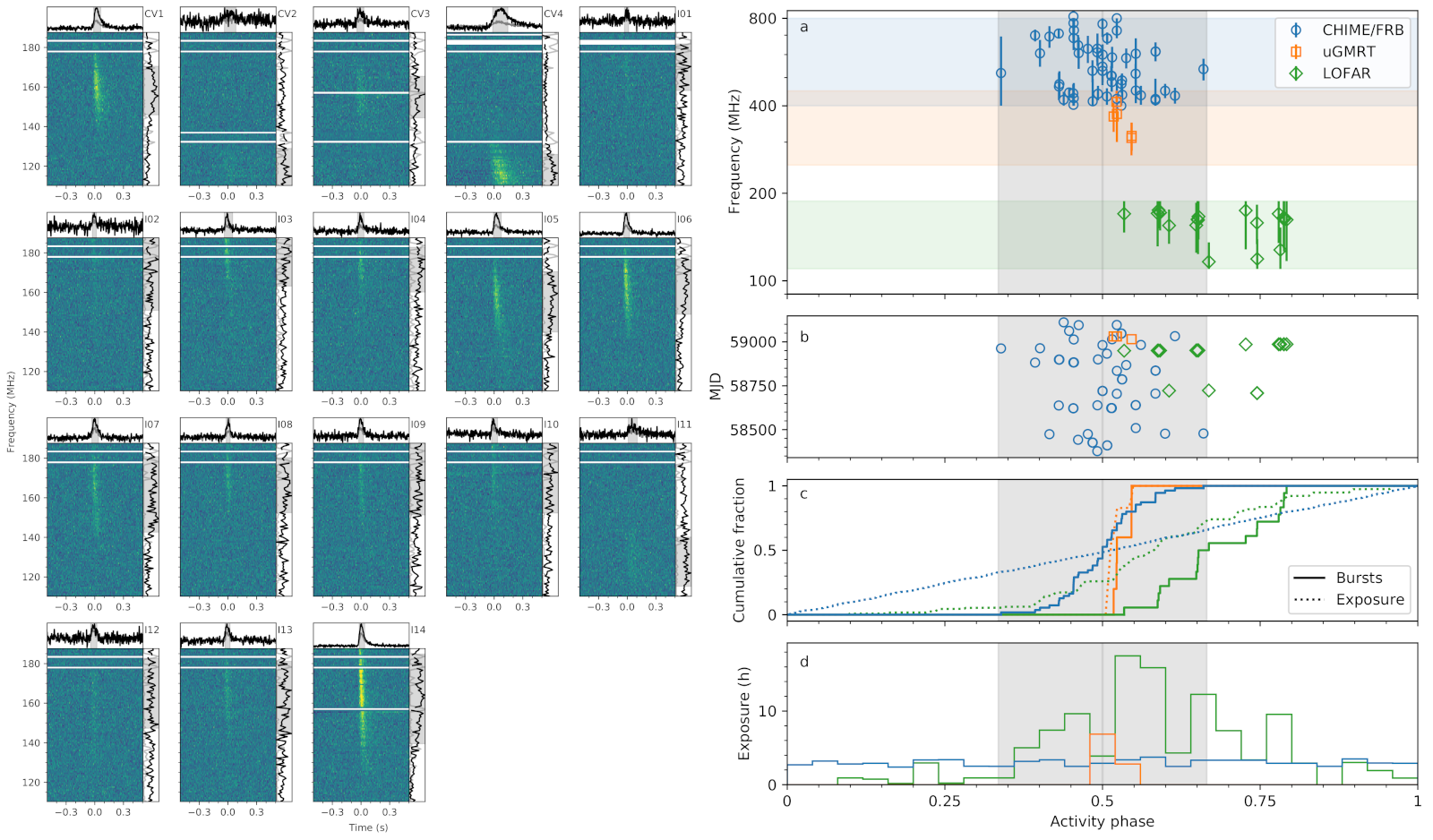| Description: | For the first time, LOFAR has observed bursts from a fast radio burst (FRB)! A total of 18 radio bursts from the nearby repeating FRB 20180916B, colloquially known as R3, have been detected with LOFAR during the last few LOFAR observing cycles (lefthand panels). These are by far the lowest-frequency detection of FRB emission to date, and some bursts are seen down to 110MHz, suggesting their spectra extend even lower. These observations provide an order-of-magnitude stronger constraint on the optical depth due to free-free absorption in the source's local environment. The LOFAR observations provide further constraints on the polarization properties and rotation measure of the source, as well as the scattering due to the host, interstellar and Galactic medium.
The CHIME telescope has found that the bursts from FRB 20180916B occur during 5 day activity windows which repeat every 16.33 days. The most striking result of the LOFAR observations is that at LOFAR frequencies, this burst activity window is delayed by about 20% of the activity period (3 days) compared to CHIME at 400 to 800 MHz (righthand panels). In our paper we discuss these results in the context of a model in which FRB 20180916B is an interacting binary system featuring a neutron star and high-mass stellar companion, though other scenarios are also still possible. In any case, our results provide an important new clue in deciphering this astrophysical mystery. |

